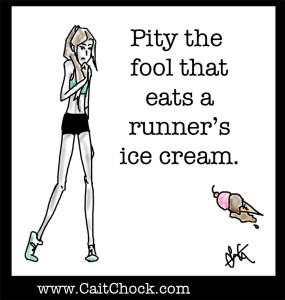Strip away the muscles, the sinew, the bones
The flesh.
Alone with yourself.
in your mind.
A step echoing amidst chatter
doubts.Refutes.
I am stronger than you say.

Tissues beg for slack,
plead for mercy.
I want to stop.
But I do not.
Mind runs on.
Push forward against protest
myself and my mind.
Friend, nemesis, untrustworthy deceivers.
I must stop.
You may not.
Only one step more.
LIAR!
——-
The June issue of Competitor magazine features Meb Keflezighi on the cover, the story is excellent and I urge you all to read it HERE. Not all can race outside of themselves, but it’s the quest to continually push our own limits that every runner is in a similar battle. Keep rising to the occasion.
More posts on MOTIVATION
——-


 To run and race your best it’s critical you’ve got the right mindset. Dr. Jim Afremow has made it his mission to help runners and athletes of all sports hone their mental training. Just as important and the physical workouts, an athlete’s mind can create a champion or turn into one’s own worst enemy. I wanted interview Dr. Afremow both because I respect his body of work and level of expertise and also because, let’s be honest, the psychology of our sport in straight-up fascinating! Often time elite athletes have trouble putting into words exactly how they get into gamer mode…so read on to hear a mental game’s coach put words to the ability:
To run and race your best it’s critical you’ve got the right mindset. Dr. Jim Afremow has made it his mission to help runners and athletes of all sports hone their mental training. Just as important and the physical workouts, an athlete’s mind can create a champion or turn into one’s own worst enemy. I wanted interview Dr. Afremow both because I respect his body of work and level of expertise and also because, let’s be honest, the psychology of our sport in straight-up fascinating! Often time elite athletes have trouble putting into words exactly how they get into gamer mode…so read on to hear a mental game’s coach put words to the ability:









